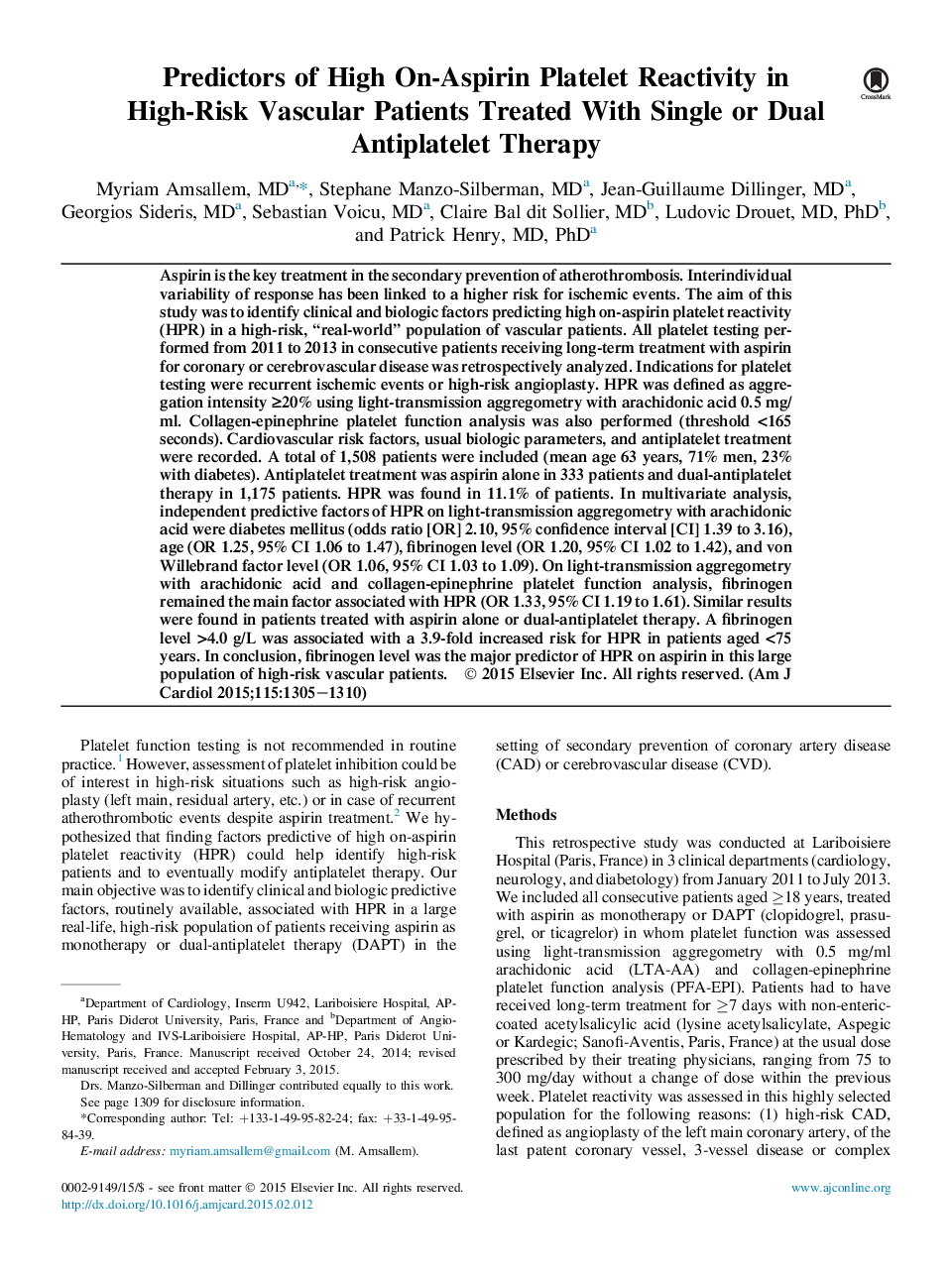| کد مقاله | کد نشریه | سال انتشار | مقاله انگلیسی | نسخه تمام متن |
|---|---|---|---|---|
| 5930172 | 1572140 | 2015 | 6 صفحه PDF | دانلود رایگان |

Aspirin is the key treatment in the secondary prevention of atherothrombosis. Interindividual variability of response has been linked to a higher risk for ischemic events. The aim of this study was to identify clinical and biologic factors predicting high on-aspirin platelet reactivity (HPR) in a high-risk, “real-world” population of vascular patients. All platelet testing performed from 2011 to 2013 in consecutive patients receiving long-term treatment with aspirin for coronary or cerebrovascular disease was retrospectively analyzed. Indications for platelet testing were recurrent ischemic events or high-risk angioplasty. HPR was defined as aggregation intensity â¥20% using light-transmission aggregometry with arachidonic acid 0.5 mg/ml. Collagen-epinephrine platelet function analysis was also performed (threshold <165 seconds). Cardiovascular risk factors, usual biologic parameters, and antiplatelet treatment were recorded. A total of 1,508 patients were included (mean age 63 years, 71% men, 23% with diabetes). Antiplatelet treatment was aspirin alone in 333 patients and dual-antiplatelet therapy in 1,175 patients. HPR was found in 11.1% of patients. In multivariate analysis, independent predictive factors of HPR on light-transmission aggregometry with arachidonic acid were diabetes mellitus (odds ratio [OR] 2.10, 95% confidence interval [CI] 1.39 to 3.16), age (OR 1.25, 95% CI 1.06 to 1.47), fibrinogen level (OR 1.20, 95% CI 1.02 to 1.42), and von Willebrand factor level (OR 1.06, 95% CI 1.03 to 1.09). On light-transmission aggregometry with arachidonic acid and collagen-epinephrine platelet function analysis, fibrinogen remained the main factor associated with HPR (OR 1.33, 95% CI 1.19 to 1.61). Similar results were found in patients treated with aspirin alone or dual-antiplatelet therapy. A fibrinogen level >4.0 g/L was associated with a 3.9-fold increased risk for HPR in patients aged <75 years. In conclusion, fibrinogen level was the major predictor of HPR on aspirin in this large population of high-risk vascular patients.
Journal: The American Journal of Cardiology - Volume 115, Issue 9, 1 May 2015, Pages 1305-1310